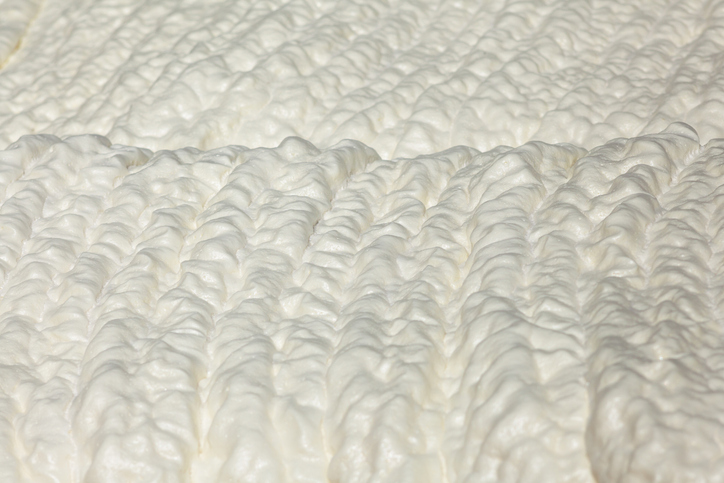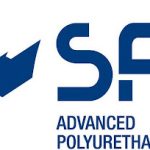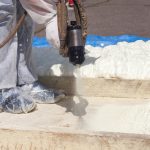Cost-Effective Pentane Reduces Environmental Impact
Pentane, an organic compound, is a more environmentally friendly alternative to traditional, older polyurethane blowing agents. Manufacturers around the globe are increasingly switching to pentane polyurethane processing equipment because of its lower cost and reduced impact on the environment, along with government-mandated regulations.
An Overview of Pentane
Pentane is a hydrocarbon solvent that comes directly from natural gas and crude oil. It now accounts for more than 50% of the global market share. When used as a blowing agent, pentane causes polyurethane to “foam up” or expand and delivers its great thermal resistance value. Three different pentane isomers are used for different insulation applications: n-pentane, iso-pentane, and cyclopentane. These isomers can be used separately or blended together to match specific insulation requirements.
Manufacturers mainly use cyclopentane in the household appliance industry, where a maximum insulating effect must be produced in a small space. Cyclopentane may also be used for cold storage rooms, refrigerated warehouses, and logistics.
N-pentane and iso-pentane have a lower insulating effect than cyclopentane; however, the foams are more stable and the individual cells are finer and firmer. These isomers are typically used for insulation in common residential or office buildings. However, as energy efficiency requirements become more stringent, there is an upward trend towards using more cyclopentane.
Environmental Impact: Pentane vs. HydroFluorocarbons
Outdated blowing agents such as hydrofluorocarbons (HFCs) are being increasingly phased out of production. These chemicals were largely used in a spray foam roof adhesive and insulation, air conditioning, and refrigeration systems. However, they’re now being phased out of production — and replaced by pentane — due to their high global warming potential (GWP).
HFCs were developed to replace stratospheric ozone-depleting substances such as HCFCs and CFCs. However, they are extremely powerful greenhouse gases that can live in the atmosphere for 15 to 29 years. Though they only represent about one percent of total greenhouse gasses, their impact on global warming can be hundreds to thousands of times greater than carbon dioxide per unit of mass.
In late 2021, the United States Environmental Protection Agency (EPA) established a program to phase out the production of damaging HFCs. It continues a decades-long process of moving towards newer, less harmful blowing agents. In the 1990s, the chemical industry introduced HFCs to replace HCFCs. In the 1980s, HCFCs replaced chlorofluorocarbons (CFCs), which were even more damaging than HFCs and HCFCs.
Pentane is a more environmentally friendly alternative to HFCs. Pentane has a GWP of less than 10 whereas HFC-134a — which accounts for 24% of total global HFC consumption — has a GWP of 1,430. In addition to being more environmentally friendly, pentane has other positive advantages for businesses.
Other Pentane Advantages
Hydrocarbon blowing agents like pentane are less expensive than HFCs and they have a higher insulation R-value. Pentane-blown foams also have better dimensional stability because they don’t condense as much as HFCs. Pentane does come with some risks, however. Its flammability requires manufacturers to take special precautions inside the facility.
Where to Find Pentane Polyurethane Processing Equipment
Linden Polyurethane offers pentane machinery solutions that can help you meet production demands, maintain compliance with local regulations, and support environmentally friendly practices.
As previously mentioned, pentane’s flammability does pose some risks and machines must be altered to account for this added hazard. Linden Polyurethane’s pentane polyurethane processing equipment can blend pentane into the polyol mixture in-line prior to the material reaching the mix head. In non-continuous blending instances, the pentane can be blended into the polyol prior to mixing.
With over 35 years of experience, Linden Polyurethane can help you with your unique polyurethane processing equipment needs. We can design and manufacture all types of polyurethane metering, processing, distribution, and storage systems in-house. In addition to producing best-in-class polyurethane equipment and mix heads, we provide top-tier service, repair, relocation, and parts replacement for our products and those produced by another manufacturer.
Ready to Switch to Pentane?
We’d love to know about your specific needs in pentane polyurethane processing equipment. Request a quote or send us a message here.





